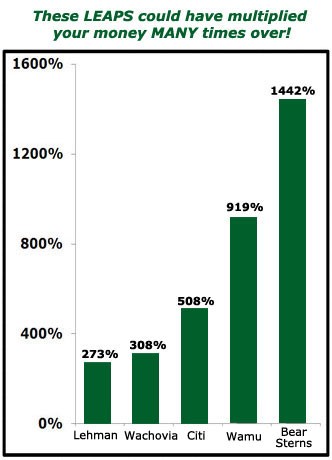How to protect your stock gains with an inexpensive put option
Post on: 16 Март, 2015 No Comment

Q: When investors use options to protect their portfolio against losses, do they collect like they would from an auto insurance policy?
A: Given the beating many investors’ portfolios have taken, the concept of insurance has become more popular.
You most likely have insurance on your house, car and health. The role of insurance is easy to understand with those assets. If something horrible were to happen, fire, accident or extreme sickness, the insurance you buy helps limit your financial risk. For instance, if you smash your car, with insurance, you can pay a deductible of $1,000 and the insurance will either repair or replace your vehicle.
Now, some investors wonder if they should apply the same concept to their portfolios. Yes, there are ways you can protect your portfolio from extreme loss.
This insurance for your portfolio, though, isn’t sold by insurance companies or banks. It’s a financial contact, called an option.
Options let you contain your loss. The options you refer to are most commonly called protective puts. The protective put is a way to use options to guard your portfolio from a big drop in stock values.
Here’s how protective puts work. Say you own 100 shares of McDonald’s stock (MCD) that you paid $56 a share for. And let’s say you want to protect yourself in the case the stock were to fall to below $45 a share.
The first thing you must decide, now, is how long you want to be protected for. It’s like life insurance, where you must choose the term or duration of the policy. For this example, let’s say you want to be covered until January 2010.
Next, you must find out how much the protection will cost. To do this, consult an options price table. which is available at many financial websites. You’d look up the price of McDonald’s put options with a strike price of $45 that expire in January 15, 2010.
The chart shows the last price was 20 cents. Since you want protection on 100 shares, you should multiply the 20 cents by 100, for a total fee of $20. You’ll need to add the commission you’ll pay to buy the option, too.

Now here’s what happens. Say in January, McDonald’s stock is trading for $60 a share. If the stock price stays above the $45 exercise price, the put option will expire worthless. But that’s not a bad thing, since your worst-case scenario didn’t happen. You’re just out the $20 plus commission that you paid for the option. You don’t complain about paying for fire insurance if your house doesn’t burn down.
But, let’s say McDonald’s stock falls to $30 a share. Here, you have the right to sell your stock for $45 a share to the person who sold you the put option. You’ve still lost money, since you paid $56 a share, but the option has saved you a $1,500 loss, the difference between the $45 exercise price and the $30 market price spread over 100 shares. In this case, you’ll agree that the $20 you spent on the option was money well spent.
As you can see, with a protective put, you don’t have a claims adjuster come to your house and ask to see your portfolio. Instead, the financial contracts are dealt with and settled much like shares of stock.
The end result of protective puts, however, is the same as insurance. You’ve cut your downside risk and protected yourself from a larger financial loss.
Matt Krantz is a financial markets reporter at USA TODAY and author of Investing Online for Dummies. He answers a different reader question every weekday in his Ask Matt column at money.usatoday.com. To submit a question, e-mail Matt at mkrantz@usatoday.com. Click here to see previous Ask Matt columns. Follow Matt on Twitter at: twitter.com/mattkrantz














